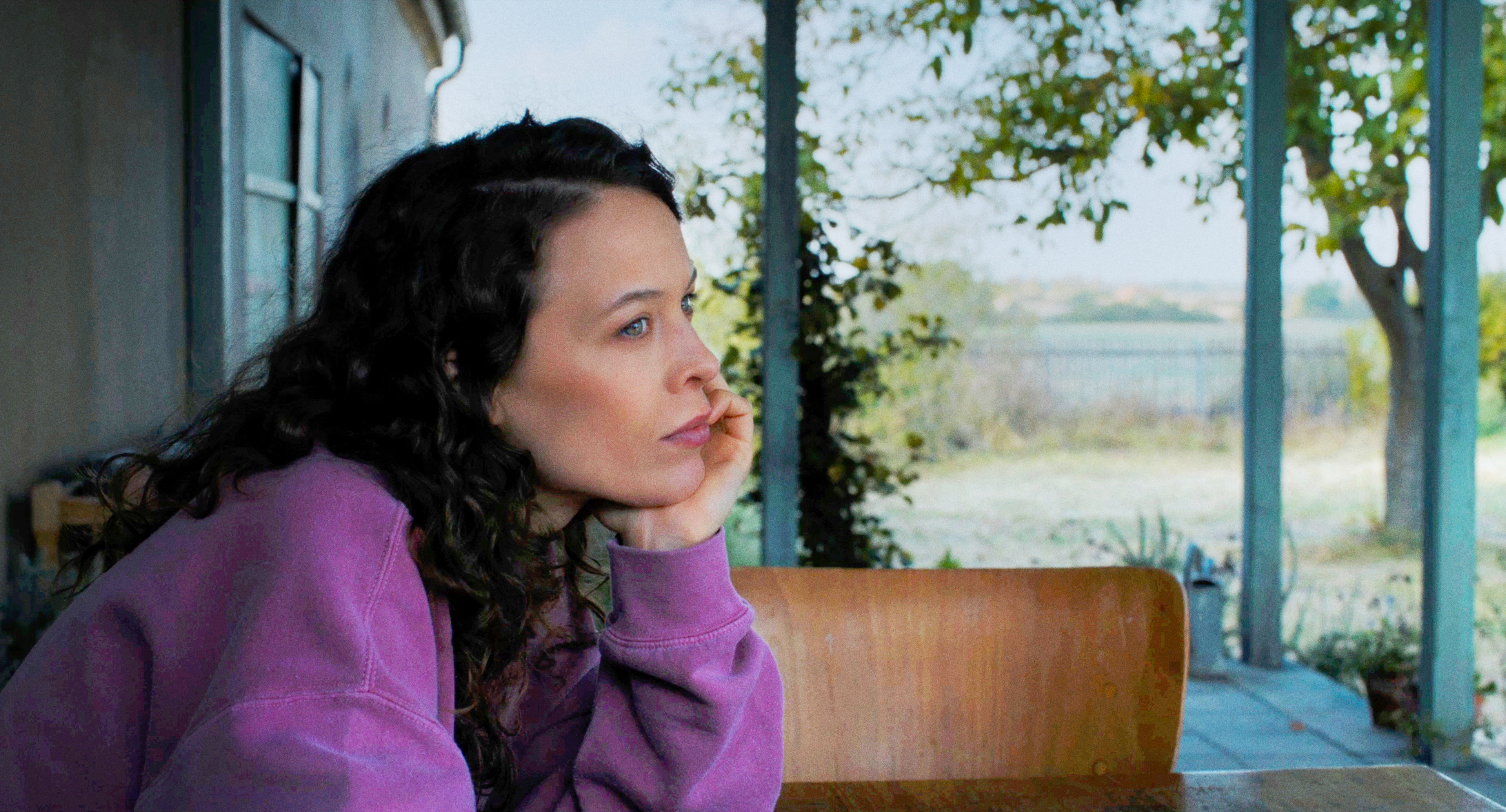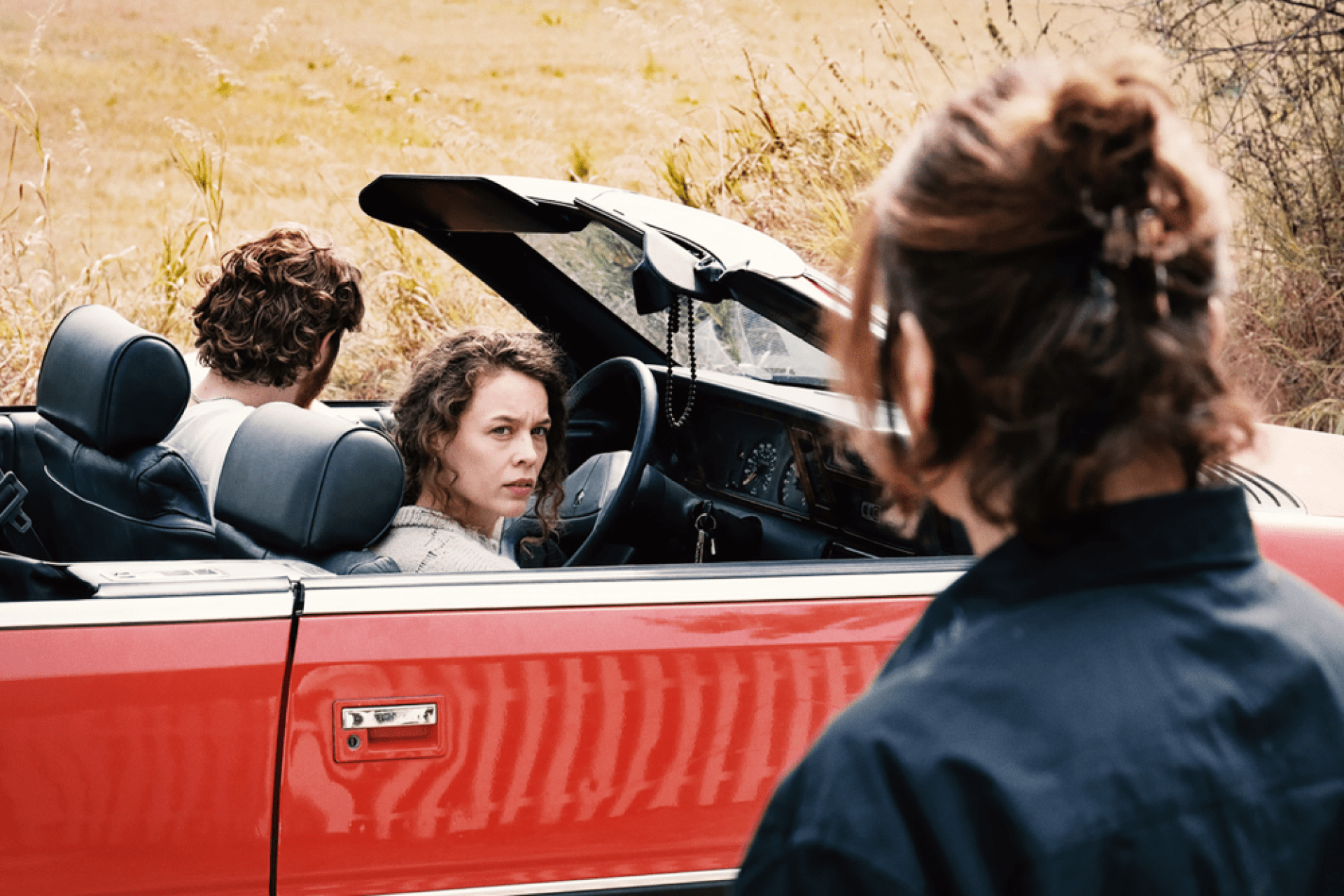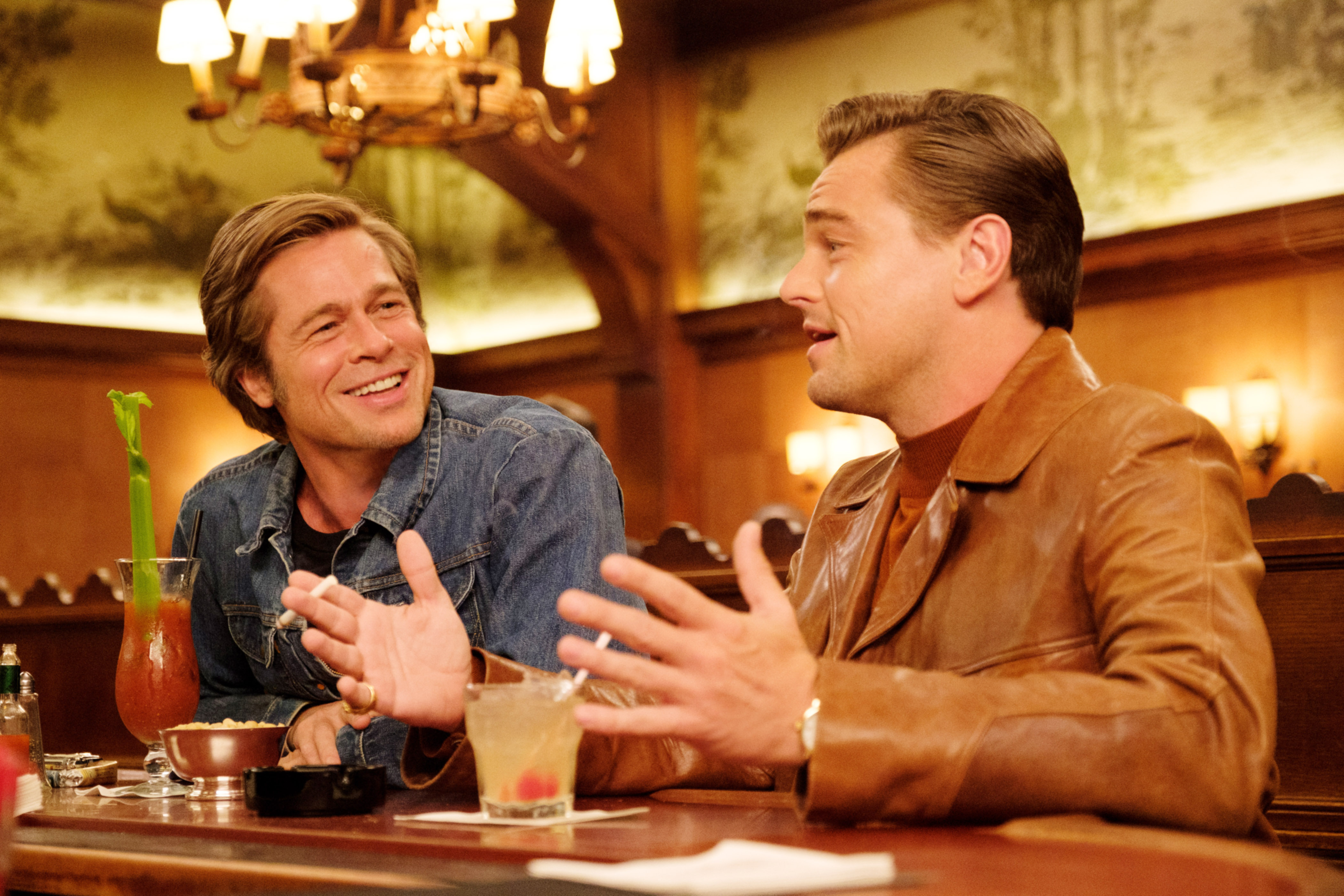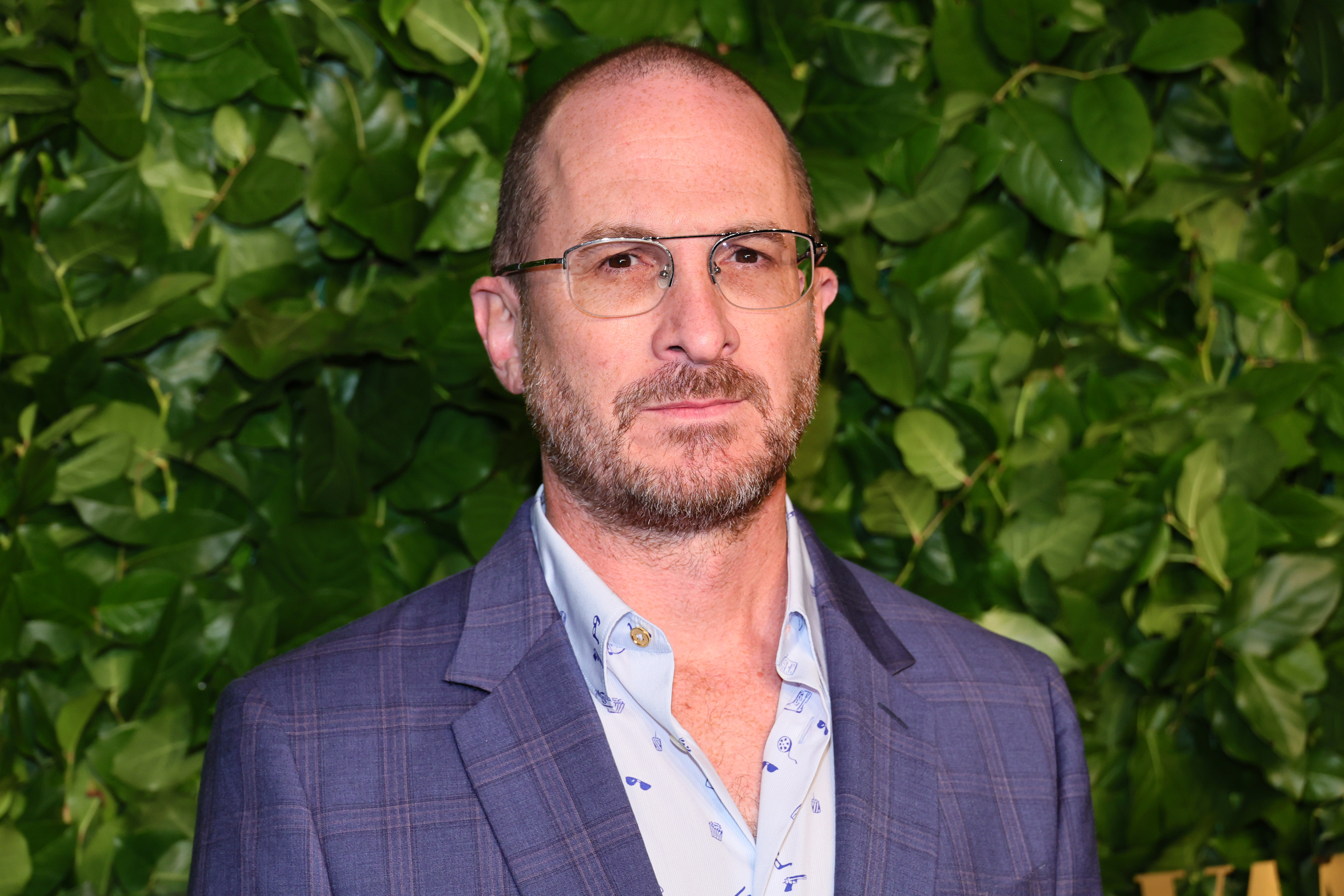You expect German filmmaker Christian Petzold (“Phoenix,” “Afire”) to show up at Berlin, but this year, he’s at Cannes for the first time with a feature, “Mirrors No. 3.” This most slippery of melodramas, starring his now-perennial collaborator Paula Beer, played Directors’ Fortnight over the weekend, and finds the “Barbara” and “Undine” director back in a melancholy mode: The title, after all, comes from a famous piece of classical music by Ravel. It’s another marvelously subdued drama heavy on the unspoken bonds and furtive exchanges between characters, never playing its emotional cards up top.
Paula Beer, the German actress who’s worked with Petzold dating back to “Transit” and has embodied his penchant for Hitchcockian women dazed and dazzled by romance and trauma and shifting political worlds, here plays Laura. She’s just survived a bad car wreck. She’s left shaken but unharmed by the accident, a little concussed, only to be taken in by a lonesome local woman (Barbara Auer, the German actress who starred in Petzold’s 2000 debut “The State I Am In”), who’s observed the accident and is clearly looking for a surrogate daughter after her own tragedy has left her stranded at a farmhouse, painting a white-picket fence to pass the time. The bond these women form becomes a strange, hallucinatory routine as Laura starts life anew after the car accident seems to have spared her, though violently, from an unfulfilling relationship with her boyfriend.
“[Laura] is born in an accident. She finds a mother, a new identity; she finds something like a childhood, a warm bed. She’s fed, she’s taught, she learns something about herbs, about cooking. She receives her first bicycle, like a child. It’s a little bit like a child,” Petzold told IndieWire over Zoom.
Petzold’s sophisticated and often cinematic-referential dramas, from the “Vertigo”-esque ode “Phoenix” and the East Germany-set doctor-in-exile portrait “Barbara,” both starring Petzold’s previous creative partner Nina Hoss, typically premiere at the Berlinale. Petzold shifted gears for “Mirrors No. 3” at Cannes, out of his home country, and working again with actress Beer after a few years apart from collaborations with Hoss.
“The festival thing is not so important anymore. [Usually] I start shooting in May, June, to finish the post-production at Christmas and January, I am open to other festivals,” Petzold said. “With this movie, I knew it wouldn’t be ready for the Berlinale. It was not a problem for me. I was there five times. I live in Berlin.”

He did, though, “25 years or 24 years ago,” appear at Cannes to screen his short film outside the main festival, so the “Afire” Berlinale Silver Bear winner says “Mirrors No. 3” is not his first time at the festival. “I was there at the beach. I had a drink, a fantastic dinner. But in the last years, I like all these directors, male or female, who are part of [Directors’ Fortnight, where ‘Mirrors No. 3’ premieres]. I’m proud and I love the audience there and the other directors around me, and I feel they’re trusted.”
Beer added, acknowledging that their collaboration after three consecutive movies isn’t a fait accompli, “We always have to find each other for the next project or to find the language we’re speaking in because, at least for me, it’s not just because we did three movies that worked really well. For me, it’s not sure that we will do the next seven together just because we did these three. For me, it’s always finding each other again and finding the need to work together on this special story.
Petzold said he was open to feedback from his actors — so much so that he ended up reshooting the final sequence of “Mirrors No. 3,” which finds Laura (Beer), Betty (Auer), and Betty’s husband (Matthias Brandt) and son (Enno Trebs) achieving a strange sort of harmony after Laura has basically taken on the identity of Betty’s dead daughter.
“I loved the final scene in the script, and they criticized it,” Petzold said. “Actors who criticize are, sometimes, I hate them, but these two, they have intelligent questions. I was a little bit nervous, and during the shooting, I felt at the end that they were right. The final scene was not OK. Sometimes, I’m a little bit concrete, and then at the editing table, I know that they [were] completely right, and I had to make the final scene again in January, five months after shooting. These actors, especially Paula, have [gained] experiences and are well-educated by me, and now, they are adult actors and they criticize me, and sometimes they’re right, and I have to destroy my own concrete behavior.”
When he wrote the script and especially the ending, Petzold said, “In the time I wrote the script, we have the Ukraine war. We have Trump waiting at the [threshold]. I had a big feeling that we had to harmonize the world. My ending was harmonizing the situation of the movie, that the family is coming together at the end, and Laura is part of the family and wants to go back to the family. This was a completely wrong decision.”
“It’s a really fragile moment talking about the script and being bit or having criticism about it,” Beer said. “It’s just before you start shooting, and to say, ‘Well, I don’t like the end.’ It’s not really helping, [but] I think it’s always really interesting to be brave enough to allow certain questions to arise.”
Beer started playing the piano a couple of years ago, so Petzold decided to build the script around Laura as a piano student, who eventually brings her budding musicality into Betty’s life. Like John Cassavetes or Mike Leigh, Petzold builds his material out of the current state of his actors at the time and what they are up to, less so a concrete idea from the start.

Playing Ravel, though, is “out of my reach,” Beer said. “When I was six, I started having [piano] lessons. I stopped when I finished school, and just played for my own. It was really fun to have a teacher for this shooting. Ravel is really… I learned the beginning. I asked my teacher, ‘How realistic is it that I am going to play this?’ I was like, ‘I’m not getting there, but I have your hands [the teacher’s] for the record.’ To see her play the piano, and how she works with that instrument, was a very big inspiration because as a musician, you have your instrument inside of you, and to understand what that means for a piano is the main part of understanding Laura and understanding her depression, how she sees the world, and where she got stuck.”
“Mirrors No. 3” was shot a few hours away from Berlin, in Brandenburg, formerly part of Prussia. An essential aspect of the shooting location, the house the filmmakers found, was the porch on which Betty and Laura convene, and where fractious family dynamics emerge. “Many people who are living there [in Brandenburg] have American cars,” Petzold said. “Many of these houses have porches directing to the street, to the social life, not porches in the backyard like normally in Germany. There is a history of this part of Germany from people in the 18th and 19th century, they wanted to leave Germany and go to the U.S.A. to have a new life. They lost their revolution, 1848 in Germany, so Germany, they want to leave it. The Prussian king [Frederick the Great] gave them money to stay, and he gave them land for agriculture. Their dreams go away, but they have to stay.”
Petzold added, “These two dynamics — our desire is far, far away, but we have to stay here — it’s a little bit in this part of Germany, and so you have this house, with this porch. We have this house, which is open and full of dreams, and now nightmares, but they had had dreams before. On the other side we have destruction.”
Beer mentioned the set tours Petzold regularly holds ahead of production as informative for her performance and for the other actors’ roles, too. “We go to all the shooting places while still in development. There are no lights. There’s not a set. It’s more of a real place,” she said. “We asked for this tour ahead of shooting. We went to the house, and it was a lovely summer day. Being able to see the landscape around it, we had an impression of this house without all the crew members. You get an idea of the atmosphere that might be in the end movie… I do my preparation for my character on my own, but meeting the others on set is really bringing it all together, and then it’s really like a jam session.”
“Mirrors No. 3” is understood as the conclusion to a trilogy built around elements that Petzold started with “Undine” (water), then succeeded with “Afire” (fire, of course), but what would the element be for this film?
“During the day when we were visiting this shooting place, I said, ‘I want to make a trilogy’… the first was water, then fire. They asked me if this could be the third part of this trilogy. There was no idea. I didn’t know what element I could do,” Petzold said. “We were visiting this house, sitting on this porch. Really storming winds were coming, and during the whole shooting, this stormy wind never stops. We had the hairs from Paula, and the others, always totally disturbed, the trees always in motion. This could be that nature says, ‘This is the third part of the trilogy. It’s wind, air, and now it’s gone: You can with a new one.’ I was sitting there on the porch, smoking a cigarette, and said, ‘OK, this is the end of the trilogy.’”
“Mirrors No. 3” premiered at the 2025 Cannes Film Festival. Metrograph Pictures has U.S. distribution rights.



